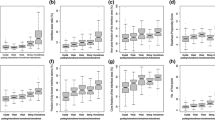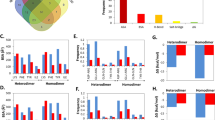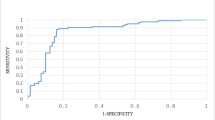Abstract
Reliable prediction of interface residues in transient complexes remains challenging, yet is highly desirable for the design of new drugs. The existing computational methods mainly rely on evolutionary information to identify these key residues, but evolutionary information may not be effective for the interface residues in all types of transient complexes, such as antigen–antibody complexes. Herein we combined B-factor with sequence profile and accessible surface area to predict these important residues using support vector machine (SVM). Furthermore, a post-processing method was developed to reduce the number of false positives recognized by SVM. The prediction results show that B-factor is an effective indicator for the interface residues in antigen–antibody complexes as well as those in other types of transient complexes. In addition, we found that the post-processing procedure made an important contribution to further improve the prediction performance. Consequently, the proposed approach could provide new insight into accurately predicting interface residues in different types of transient complexes.




Similar content being viewed by others
Abbreviations
- SVM:
-
Support vector machine
- ASA:
-
Accessible surface area
- MCC:
-
Matthew’s correlation coefficient
- ROC:
-
Receiver operating characteristic
- CDR:
-
Complementarity determining region
References
Altschul SF, Madden TL, Schäffer AA, Zhang J, Zhang Z, Miller W, Lipman DJ (1997) Nucleic Acids Res 25:3389–3402
Bradford JR, Westhead DR (2005) Bioinformatics 21:1487–1494
Bradford JR, Needham CJ, Bulpitt AJ, Westhead DR (2006) J Mol Biol 362:365–386
Chang CC, Lin CJ (2001) Software available at: http://www.csie.ntu.edu.tw/~cjlin/libsvm
Chen H, Zhou HX (2005) Proteins 61:21–35
Chung JL, Wang W, Bourne PE (2006) Proteins 62:630–640
Dong Q, Wang X, Lin L, Guan Y (2007) BMC Bioinformatics 8:147
Fariselli P, Pazos F, Valencia A, Casadio R (2002) Eur J Biochem 269:1356–1361
Fariselli P, Zauli A, Rossi I, Finelli M, Martelli PL, Casadio R (2003) In: IEEE XIII workshop on neural networks for signal processing. pp 33–41
Friedrich T, Pils B, Dandekar T, Schultz J, Müller T (2006) Bioinformatics 22:2851–2857
Hoskins J, Lovell S, Blundell TL (2006) Protein Sci 15:1017–1029
Hwang H, Pierce B, Mintseris J, Janin J, Weng Z (2008) Proteins 73:705–709
Jones S, Thornton JM (1996) Proc Natl Acad Sci USA 93:13–20
Jones S, Thornton JM (1997) J Mol Biol 272:121–132
Jones S, Thornton JM (1997) J Mol Biol 272:133–143
Kabsch W, Sander C (1983) Biopolymers 22:2577–2637
Keskin O, Gursoy A, Ma B, Nussinov R (2008) Chem Rev 108:1225–1244
Koike A, Takagi T (2004) Protein Eng Des Sel 17:165–173
Landau M, Mayrose I, Rosenberg Y, Glaser F, Martz E, Pupko T, Ben-Tal N (2005) Nucleic Acids Res 33:W299–W302
Li JJ, Huang DS, Wang B, Chen P (2006) Int J Biol Macromol 38:241–247
Li MH, Lin L, Wang XL, Liu T (2007) Bioinformatics 23:597–604
Liang S, Zhang C, Liu S, Zhou Y (2006) Nucleic Acids Res 34:3698–3707
Liu R, Jiang W, Zhou Y (2009) Amino Acids. doi:10.1007/s00726–009–0245–8
Madabushi S, Yao H, Marsh M, Kristensen DM, Philippi A, Sowa ME, Lichtarge O (2002) J Mol Biol 316:139–154
Mintseris J, Weng Z (2003) Proteins 53:629–639
Mintseris J, Wiehe K, Pierce B, Anderson R, Chen R, Janin J, Weng Z (2005) Proteins 60:214–216
Mirza O, Henriksen A, Ipsen H, Larsen JN, Wissenbach M, Spangfort MD, Gajhede M (2002) J Immunol 165:331–338
Neuvirth H, Raz R, Schreiber G (2004) J Mol Biol 338:181–199
Ofran Y, Rost B (2003) FEBS Lett 544:236–239
Ofran Y, Rost B (2007) Bioinformatics 23:e13–e16
Ofran Y, Schlessinger A, Rost B (2008) J Immunol 181:6230–6235
Res I, Mihalek I, Lichtarge O (2005) Bioinformatics 21:2496–2501
Rost B, Sander C (1994) Proteins 20:216–226
Tseng YY, Liang J (2007) Ann Biomed Eng 35:1037–1042
Vapnik VN (1995) The nature of statistical learning theory. Springer, New York
Wang B, Wong HS, Huang DS (2006) Protein Pept Lett 13:999–1005
Wang Y, Xue Z, Shen G, Xu J (2008) Amino Acids 35:295–302
Yan C, Dobbs D, Honavar V (2004) Bioinformatics 20:i371–i378
Yuan Z, Zhao J, Wang ZX (2003) Protein Eng 16:109–114
Zhou HX, Shan Y (2001) Proteins 44:336–343
Acknowledgments
This work was supported by the National Natural Science Foundation of China (Grant No. 90608020) and NCET-060651.
Author information
Authors and Affiliations
Corresponding author
Electronic Supplementary Material
Below is the link to the electronic supplementary material.
Rights and permissions
About this article
Cite this article
Liu, R., Zhou, Y. Using Support Vector Machine Combined with Post-processing Procedure to Improve Prediction of Interface Residues in Transient Complexes. Protein J 28, 369–374 (2009). https://doi.org/10.1007/s10930-009-9203-2
Published:
Issue Date:
DOI: https://doi.org/10.1007/s10930-009-9203-2




